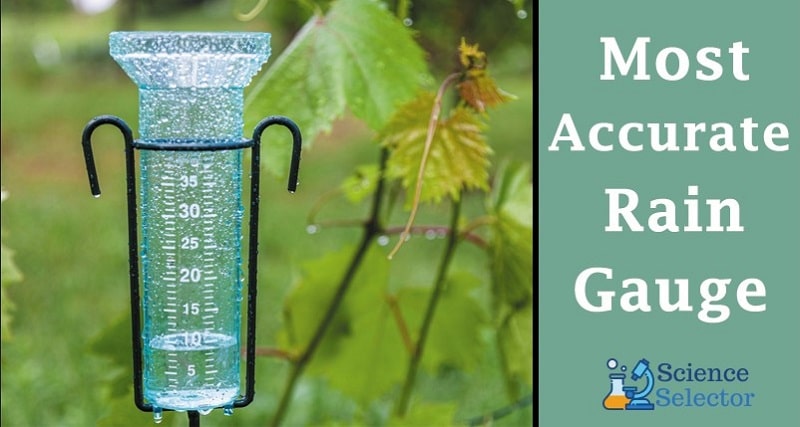Rainforests are the lungs of the world, as the old description goes. They are beautiful and astounding places that only cover about six percent of the Earth’s surface, and they are also our oldest living ecosystems, CalTech, reports. But due to deforestation and the effects of global warming, the planet’s “lungs” are vanishing.
This is a real tragedy for all of us. Rainforests almost seem magical, and half of the world’s plant and animal species live within them. But before we discuss the effects of deforestation and global warming, here’s a little more information about rainforests and just how important they really are.
Deforestation Is Killing Our Rain Forests, How Do We Stop It?
What Is a Rainforest?
Rainforests are incredibly dense jungles — walking inside one, as I have often done, I can tell you the air feels fresh, and yet at the same time, like a soft blanket of warm, damp air. Even with the wealth of birds they support, a rainforest can be either eerily silent or bursting with noise. In my Costa Rican rainforest there are the comical calls of Oropendolas and the deafening shouts of mantled howler monkeys.
Full of colorful butterflies and buzzing with other insects, rain forests earned their name because they receive so much rain every year. Most tropical rainforests are warm and very humid, and the animals and plants that live within them have evolved to deal with this.
Rainforests Consist of Four Layers
Rainforests are very complex, like the organisms that live there. Here are the layers of a rainforest.
First, the Emergent Layer
If you were traveling in an airplane, the first layer you might notice is the emergent layer. Where the tallest trees, towering as much as 200 feet from the forest floor, poke their green, leafy branches out. With trunks as large as 16 feet in diameter, most of these trees are broad-leaved hardwood evergreens. Drenched in sunlight, monkeys, eagles, bats, and butterflies are often in the tops of these trees.
The next layer is the canopy
You can think of this as the roof of the rainforest. Most canopy trees have broad, shiny leaves with points at the tip (which helps shed the abundant rain). In this maze of leaves and branches, food is plentiful, and many species of toucans, snakes, and treefrogs call this place home.
The third layer is the understory layer
In this shady place, plants have to work a little harder to thrive. So they grow larger leaves to reach the sunlight, but the plants themselves stay relatively small — rarely larger than 12 feet tall. This is the realm of the jaguar and the red-eyed treefrog. In Africa and Asia, leopards replace jaguars.
The fourth and final layer is the forest floor
This place is so shady that few plants grow here. Because no sun reaches this dense shade, leaves that fall decomposes quickly — within six weeks, as compared to one year in a forest with a non-rainy climate. The rainforests of Central and South America are home to the giant anteater, an enormous insectivore.
More than 30 million species of plants and animals live within the world’s rainforests, which are also home to many foods we love, like pineapples, coconuts, avocados, figs, Brazil nuts, cashews, chocolate, cinnamon, and sugar.
But tropical rainforests do much more than that. They play a vital role in regulating weather locally and globally by absorbing and creating rainfall and exchanging atmospheric gases, Mongabay notes. The Amazon rainforest creates 50 to 80 percent of its own rainfall via transpiration (the passage of water through a plant’s vascular system into the atmosphere).
Like all forms of vegetation, rainforests influence the surface albedo (the reflectivity of a surface) by absorbing more heat than just bare soil does alone. As a result, trees disperse the heat into the atmosphere, where it condenses into rain. So in other words, rainforests keep the surrounding area cooler and produce rain.
How Deforestation Affects Rainforests
In the very simplest of terms, deforestation clears vegetative cover, leaving the Earth bare. And that means less heat absorbed. That results in less moisture being taken up into the atmosphere. But rainfall is affected in other ways too. Fires are often set to clear the forests, and this creates pollution, releasing tiny particles called aerosols into the atmosphere. Depending on their size, shape, and color, aerosols can either heat or cool the air. If released in high concentrations, these biomass-burning aerosols can actually affect the local climate by forming more cloud cover, while at the same time decreasing rainfall, according to research conducted by NASA.
Where There’s Smoke, There Are Aerosols
If there’s a lot of smoke in an area, “cloud droplets form around the aerosol particles, but may never grow large enough to fall as rain,” researchers at NASA’s Goddard Space Flight Center said, after studying the effect. So extensive forest fires cause the further reduction of rainfall, making burned areas more prone to dryness and fires. These changes are the reason why deforested regions suffer declines in rainfall.
But the effects of tropical rainforest deforestation can even be felt in regions far away from where the devastation occurred. A 2005 study by NASA found that deforestation in the southern area of the Amazon in South America affected rainfall from Mexico to Texas and the Gulf of Mexico as well. Forest loss in Central Africa affects rain patterns in the U.S.’s Midwest. Ongoing deforestation in Southeast Asia is also impacting rainfall in China and the Balkan Peninsula.
National Geographic notes that one of the most important functions of rainforests is that they remove greenhouse gases from the atmosphere. These gases fuel global warming, and with fewer forests to absorb them, the severity of global warming is speeding up.
Additional Facts About Deforestation
Agriculture is the largest force fueling deforestation. Forests fall to the ax, the chainsaw, and the bulldozer to make room for crops and grazing livestock. And small farmers often clear patches of rainforest by cutting down trees and then burning them, in a process known as “slash-and-burn” agriculture.
Logging comes right after agriculture when it comes to deforestation devastation. There’s a tree “holocaust” going on right now, to manufacture the world’s paper and wood products. Loggers build roads to access trees in further reaches of the forest, and that results in even more deforestation. And much of this is done illegally. Forests are also plundered to make room for houses thanks to urban sprawl.
Some deforestation isn’t intentional and can occur as a result of human and natural factors such as wildfires or livestock over-grazing, and this often prevents the growth of young trees.
We stand to lose beautiful creatures like this grasshopper, resting on a leaf in a Costa Rican rainforest. Image by Author. All rights reserved.
But this has to be the most shocking news I’ve touched on so far: The United Nations Food and Agriculture Organization (FAO) estimates the destruction of 18 million acres ( 7.3 million hectares) of these beautiful forests, every year. In the last two decades, Afghanistan has lost more than 70 percent of its rainforests, Conserve Energy Future reports. Every single minute, an area of rainforest that’s the size of 20 football fields is destroyed. If we do not change our ways, all of the Earth’s rainforests will vanish within the next 100 years. In just the next 25 years alone, estimates say we will lose 28,000 species of plants and animals.
So How Do We Prevent Deforestation?
As consumers, we can make choices that help save rainforests, Greenpeace notes. We can eat sustainable food, and purchase wood that’s recycled or certified as sustainable.
We need to make sure that the world’s governments do their part. This means putting a stop to corrupt logging practices and strongly enforcing forest conservation practices. Corruption almost always accompanies illegal logging and, in many cases, organized crime and armed conflict.
We need to ensure that the world’s leaders are paying attention and embracing local and international forest conservation policies based on the current scientific findings. On a global level, we need commitments from developing countries (especially those with tropical rainforests) to reduce greenhouse gas emissions. To that end, Greenpeace has founded Forests for Climate, a “proposal for an international funding mechanism to protect tropical forests.”
“Under this initiative, developing countries with tropical forests can make commitments to protecting their forests in exchange for the opportunity to receive funding for capacity-building efforts and national-level reductions in deforestation emissions,” Greenpeace reports .”This provides a strong incentive for developing countries to continually improve their forest protection programs.”
Walking among the giant trees in the Costa Rican rainforest is a humbling experience. It’s like walking in a green cathedral. If we lose such beauty, how will we even breathe?
The video below shows just how devasting deforestation really is.
-
An accurate rain gauge is a convenient tool to measure the rainwater receiving capacity of…
-
You know that the earth’s atmosphere is warming, and you have also likely noticed that…
-
We live a very busy life, and discoveries and inventions play a pivotal role in…
-
Squares have four congruent sides and four right angles. They must be easy to draw,…
-
One of the most useful tools in chemistry is a periodic table, which organizes all…
-
The planet’s increase in temperature has risen to heights the world hasn’t seen in past…
-
Oscilloscopes are a must-have for any electronics workbench. But how do you calibrate an oscilloscope?…
-
Have you always wondered what planets exist beyond earth? Yes, you might have learned that…








